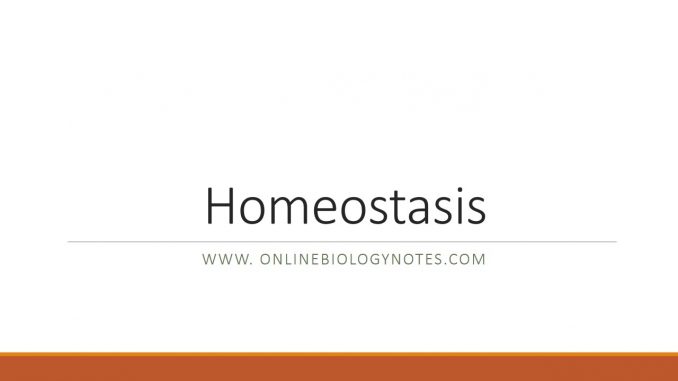
Homeostasis-Control System
- Homeostasis is a physiological process of a body to maintain constant internal environment in response to fluctuations in outer external environment. Internal environment refers the interstitial fluids surrounding individual cells while external environment refers to the environment in which organisms live. Maintaining a dynamic equilibrium between body’s internal environment and changing external environment requires constant monitoring and adjustments. This adjusting of physiological systems within the body is called homeostatic regulation.
- The liver, the kidneys, and the brain (hypothalamus, the autonomic nervous system and the endocrine system help maintain homeostasis. An inability to maintain homeostasis may lead to death or a disease, a condition known as homeostatic imbalance. Other diseases which result from a homeostatic imbalance include diabetes, dehydration, hypoglycemia, hyperglycemia, gout, hypothermia etc. Medical intervention can help restore homeostasis and possibly prevent permanent damage to the organs.
Homeostasis Control System
The control system for regulation of homeostasis is an open system, which involves stimulus as input and response as output.
Control system or homeostasis regulation involves five basic components:
- Stimulus: any physical, chemical or environmental factors or disturbance that causes deviation of normal body’s environment
- Receptor or detector: The receptor receives the stimulus and forward to the control center. Eg. neurons
- Control center or regulator: The control center or coordinator center receives and processes information from the receptor. It set the normal reference point or setup point for any physiological processes. Eg. Hypothalamus or brain
- Effector: The control center commands the effector to respond to the stimulus. Eg. Glands, muscles
- Response: It is the reaction to the stimulus. It is a corrective measures toward the disturbance. It can oppose or enhance the stimulus.All the physiological process have their own reference point or setup point. Any deviation from reference point activates the control system. The control system after optimizing the physiological process to its reference point is always feed backed. The control system is known as feed-back mechanism.There are two form of feed-back mechanism
- Negative feed-back mechanism
- Positive feed-back mechanism
